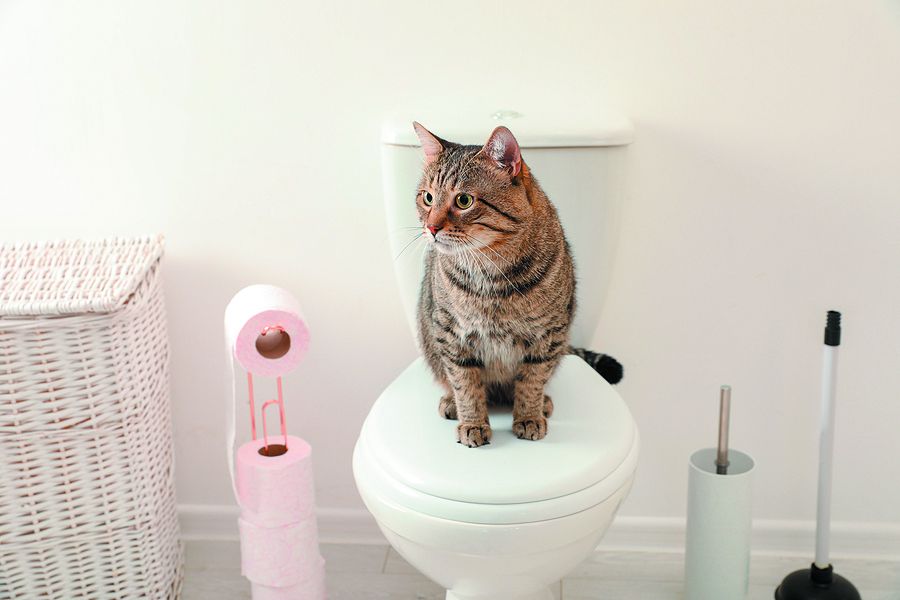Avoid Clogs and Damage: Don't Flush Cat Poop Down Your Toilet - Expert Insights
Avoid Clogs and Damage: Don't Flush Cat Poop Down Your Toilet - Expert Insights
Blog Article
How do you actually feel in relation to How to Dispose of Cat Poop and Litter Without Plastic Bags?

Intro
As pet cat owners, it's vital to bear in mind how we throw away our feline good friends' waste. While it might seem hassle-free to flush cat poop down the bathroom, this method can have destructive consequences for both the setting and human health and wellness.
Alternatives to Flushing
Luckily, there are safer and a lot more liable methods to take care of cat poop. Consider the complying with options:
1. Scoop and Dispose in Trash
The most usual approach of dealing with pet cat poop is to scoop it right into an eco-friendly bag and toss it in the trash. Make sure to use a specialized trash inside story and dispose of the waste promptly.
2. Use Biodegradable Litter
Choose naturally degradable feline litter made from materials such as corn or wheat. These litters are eco-friendly and can be securely dealt with in the garbage.
3. Hide in the Yard
If you have a backyard, take into consideration hiding pet cat waste in a marked location far from vegetable gardens and water sources. Be sure to dig deep adequate to avoid contamination of groundwater.
4. Set Up a Pet Waste Disposal System
Invest in a pet dog garbage disposal system especially developed for cat waste. These systems use enzymes to break down the waste, lowering smell and environmental influence.
Wellness Risks
Along with environmental concerns, purging feline waste can also pose wellness risks to humans. Pet cat feces might include Toxoplasma gondii, a parasite that can create toxoplasmosis-- a possibly severe ailment, especially for pregnant ladies and people with weakened immune systems.
Ecological Impact
Flushing pet cat poop introduces hazardous virus and bloodsuckers into the water supply, posturing a considerable risk to marine environments. These contaminants can adversely impact aquatic life and compromise water top quality.
Final thought
Liable family pet ownership expands beyond supplying food and shelter-- it additionally includes correct waste administration. By avoiding flushing pet cat poop down the toilet and selecting different disposal methods, we can minimize our ecological footprint and secure human wellness.
Why Can’t I Flush Cat Poop?
It Spreads a Parasite
Cats are frequently infected with a parasite called toxoplasma gondii. The parasite causes an infection called toxoplasmosis. It is usually harmless to cats. The parasite only uses cat poop as a host for its eggs. Otherwise, the cat’s immune system usually keeps the infection at low enough levels to maintain its own health. But it does not stop the develop of eggs. These eggs are tiny and surprisingly tough. They may survive for a year before they begin to grow. But that’s the problem.
Our wastewater system is not designed to deal with toxoplasmosis eggs. Instead, most eggs will flush from your toilet into sewers and wastewater management plants. After the sewage is treated for many other harmful things in it, it is typically released into local rivers, lakes, or oceans. Here, the toxoplasmosis eggs can find new hosts, including starfish, crabs, otters, and many other wildlife. For many, this is a significant risk to their health. Toxoplasmosis can also end up infecting water sources that are important for agriculture, which means our deer, pigs, and sheep can get infected too.
Is There Risk to Humans?
There can be a risk to human life from flushing cat poop down the toilet. If you do so, the parasites from your cat’s poop can end up in shellfish, game animals, or livestock. If this meat is then served raw or undercooked, the people who eat it can get sick.
In fact, according to the CDC, 40 million people in the United States are infected with toxoplasma gondii. They get it from exposure to infected seafood, or from some kind of cat poop contamination, like drinking from a stream that is contaminated or touching anything that has come into contact with cat poop. That includes just cleaning a cat litter box.
Most people who get infected with these parasites will not develop any symptoms. However, for pregnant women or for those with compromised immune systems, the parasite can cause severe health problems.
How to Handle Cat Poop
The best way to handle cat poop is actually to clean the box more often. The eggs that the parasite sheds will not become active until one to five days after the cat poops. That means that if you clean daily, you’re much less likely to come into direct contact with infectious eggs.
That said, always dispose of cat poop in the garbage and not down the toilet. Wash your hands before and after you clean the litter box, and bring the bag of poop right outside to your garbage bins.
https://trenchlesssolutionsusa.com/why-cant-i-flush-cat-poop/

We were shown that editorial on Can You Flush Cat Poop Down The Toilet? through a good friend on another web property. Are you aware of somebody else who is sincerely interested in the topic? Why not share it. Many thanks for going through it.
Click Here Report this page